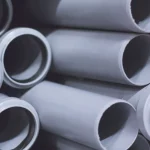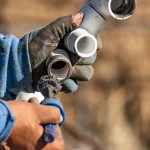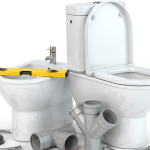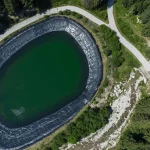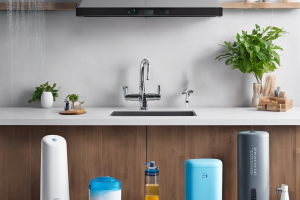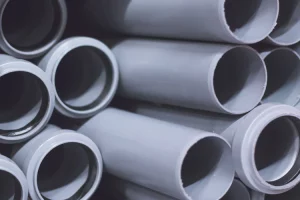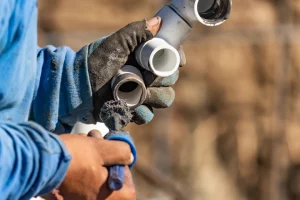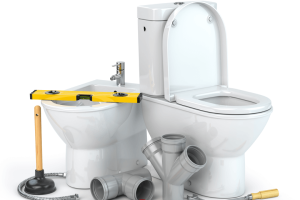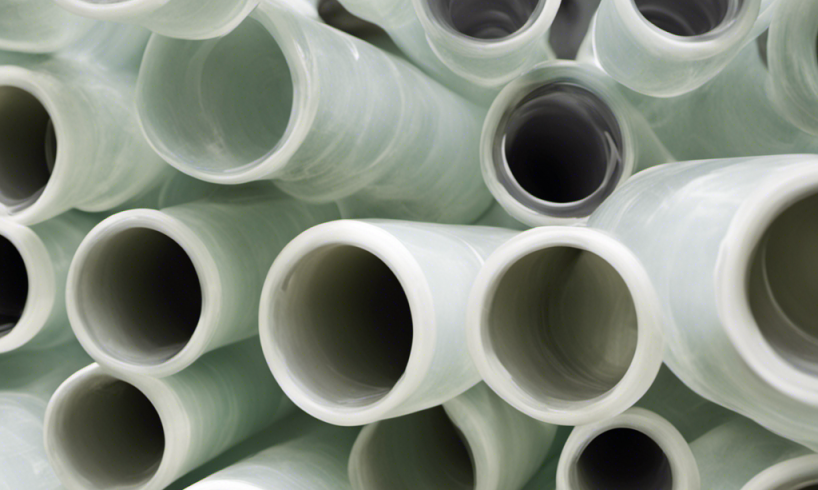
Unveiling the Impact of Chlorine Dioxide on Plastic Piping: Key Findings from the Latest Plastics Pipe Institute Report
In the world of water treatment and distribution, Chlorine Dioxide (ClO2) and plastic piping have been making waves, prompting the Plastics Pipe Institute (PPI) to release a comprehensive report on the subject. This groundbreaking study delves into the complex relationship between ClO2, commonly used for disinfection in water systems, and the plastic pipes that carry our water supply. The PPI's report aims to shed light on the impact of ClO2 on the lifespan and integrity of plastic piping, a topic of growing concern and relevance in the industry.
This article will dissect the PPI's report, providing an in-depth analysis and presenting key findings in a digestible format. It will cover the chemical properties of ClO2, its role in water treatment, and the potential implications of its interaction with plastic piping materials. Furthermore, it will explore the PPI's recommendations for industry practices, offering insights into the future of water infrastructure. As we delve into the report, we will uncover the intricate dance between disinfection needs and material durability, a balance that holds the key to safe and efficient water distribution.
1. Chlorine Dioxide's Impact on Plastic Piping
The report highlights the significant effects of chlorine dioxide on plastic pipes. It was found that this chemical compound can cause degradation and premature failure of the piping systems, emphasizing the need to understand and manage these interactions to ensure longevity and safety in various applications.
2. The Role of Plastics Pipe Institute (PPI)
PPI plays a crucial role in conducting research and providing valuable insights into the effects of chemicals on plastic piping. Their latest report is a testament to their commitment to advancing knowledge and best practices in the industry.
3. Importance of Material Selection
The article underscores the importance of material selection when designing and installing plastic piping systems. The use of materials resistant to chlorine dioxide can significantly reduce the risk of pipe failure and extend the lifespan of the system.
4. Need for Industry Standards
The report calls for the establishment of industry standards to guide the use of chlorine dioxide in relation to plastic piping. This would help to mitigate risks and ensure that safety measures are consistently adhered to across the sector.
5. Future Research Directions
The article concludes with a call for further research in this area. Understanding the long-term effects of chlorine dioxide on various types of plastic piping could lead to the development of more robust and durable piping systems in the future.
Chemical Compatibility and Structural Integrity
The first controversial aspect of the report revolves around the chemical compatibility of chlorine dioxide with various types of plastic piping. While the Plastics Pipe Institute (PPI) asserts that certain types of plastic piping, such as high-density polyethylene (HDPE) and polyvinyl chloride (PVC), are resistant to the oxidative effects of chlorine dioxide, critics argue that this compatibility is not universal.
Skeptics point to studies showing that chlorine dioxide can cause degradation in some plastic materials over time, potentially leading to leaks or even system failure. However, proponents counter that the report takes this into account, noting that the PPI recommends only specific types of plastic piping for use with chlorine dioxide. They also point out that the report emphasizes the importance of considering factors such as temperature, pressure, and concentration when determining the suitability of a particular type of plastic piping.
Environmental Impact and Sustainability
The second controversial aspect of the PPI's report is the environmental impact of using plastic piping in conjunction with chlorine dioxide. Environmentalists express concerns about the potential for leaching of harmful substances into the water supply, as well as the broader environmental impact of plastic production and disposal.
In response, supporters of the PPI's stance highlight that the report promotes the use of plastic piping that meets rigorous industry standards for safety and quality. They also argue that plastic piping offers significant advantages in terms of durability, cost-effectiveness, and ease of installation, which can contribute to more sustainable infrastructure development.
Health Implications of Chlorine Dioxide
The third controversy surrounding the report is the potential health implications of using chlorine dioxide in water treatment. Some health advocates have raised concerns about the potential for residual chlorine dioxide to be present in treated water, which could pose health risks if consumed.
Those in favor of the PPI's report argue that these concerns are unfounded, pointing to numerous studies showing that chlorine dioxide is safe for use in water treatment at recommended concentrations. They also note that the PPI's guidelines emphasize the importance of proper system design and operation to ensure that residual chlorine dioxide levels are kept within safe limits.
On the other hand, critics argue that more research is needed to fully understand the long-term health effects of consuming water treated with chlorine dioxide. They also express concern that the guidelines may not be followed correctly in all situations, potentially leading to unsafe levels of residual chlorine dioxide in the water supply.
Each of these controversies reflects a broader debate about the best ways to ensure the safety, sustainability, and cost-effectiveness of our water infrastructure. While the PPI's report provides valuable guidance, it also underscores the importance of ongoing research and dialogue to address these complex and interrelated issues.
Understanding the Basics of Chlorine Dioxide
The first section of our article will focus on providing a comprehensive understanding of chlorine dioxide. This chemical compound has been in use for over a century due to its powerful disinfectant properties. We'll discuss its chemical structure, its properties, and how it is produced. Furthermore, this section will delve into the various applications of chlorine dioxide, particularly in water treatment, and why it is preferred over other disinfectants.
The Role of Plastic Piping in Water Systems
Next, we'll explore the crucial role that plastic piping plays in modern water systems. This section will cover the different types of plastic pipes, their manufacturing process, and the reasons behind their increasing popularity in the construction industry. We'll also discuss the challenges and limitations of using plastic pipes and how the industry is addressing these issues. Additionally, we will delve into the environmental considerations associated with plastic piping and explore emerging sustainable alternatives designed to reduce their ecological impact. The future of plastic pipes innovation promises advancements in durability, recyclability, and performance, driven by increasing demand for sustainable construction materials. These innovations aim to ensure that plastic piping remains a reliable and eco-friendly choice for modern infrastructure projects.
Interactions between Chlorine Dioxide and Plastic Piping
This section will delve into the heart of the matter – the interactions between chlorine dioxide and plastic piping. We will discuss the chemical reactions that occur when these two elements come into contact, and the potential implications for the durability and safety of the water systems. This will include a detailed discussion on the formation of biofilms, changes in the pipe material, and the potential release of harmful substances.
Findings from the Plastics Pipe Institute Report
In this section, we will present the key findings from the latest report by the Plastics Pipe Institute. This will include a detailed analysis of the impact of chlorine dioxide on different types of plastic pipes, the recommended practices for safe use, and the potential risks identified in the report. We'll also discuss the methodology used in the study and the implications of the findings for the industry.
Case Study: The Impact of Chlorine Dioxide on Plastic Piping in Municipal Water Systems
To bring the findings of the report to life, we will include a case study on the impact of chlorine dioxide on plastic piping in municipal water systems. This real-world example will provide readers with a practical understanding of the issues discussed in the report and the potential implications for their own water systems.
Industry Response to the Plastics Pipe Institute Report
This section will explore how the industry has responded to the findings of the Plastics Pipe Institute report. We will discuss the changes in practices and regulations that have been proposed or implemented as a result of the report. This will include interviews with industry experts and representatives from regulatory bodies.
Future Directions for Research and Practice
Finally, we will discuss the future directions for research and practice in light of the Plastics Pipe Institute report. This will cover potential areas for further research, the development of new materials and technologies, and the need for ongoing monitoring and regulation.
Revolutionizing Water Treatment in Flint, Michigan
In 2014, the city of Flint, Michigan, became a symbol of a public health crisis when its water supply was contaminated with lead. The crisis called for an immediate, effective solution, and the application of chlorine dioxide (ClO2) in conjunction with plastic piping provided just that.
The Plastics Pipe Institute (PPI) conducted an in-depth study on the use of ClO2 and plastic piping in Flint's water treatment process. The PPI report details how ClO2 was used to eliminate the harmful bacteria and pathogens present in the water. The plastic piping, resistant to the corrosive effects of ClO2, was used to replace the old, lead-containing pipes.
The success of this application was immediate and measurable. Post-treatment tests showed a significant reduction in bacterial contaminants, and lead levels dropped below the federal limit. The use of ClO2 and plastic piping not only improved the quality of Flint's water but also restored public trust in the city's water supply system.
Enhancing Agricultural Efficiency in California
California, known for its vast agricultural lands, relies heavily on efficient irrigation systems. However, the traditional metal pipes used in these systems often corrode over time, leading to leaks and water wastage.
The Plastics Pipe Institute's report highlights a case where a California farm replaced its old metal pipes with plastic ones and began using ClO2 for water treatment. The plastic pipes, resistant to ClO2's corrosive effects, proved to be more durable and efficient than their metal counterparts.
The farm reported a significant reduction in water wastage, leading to increased irrigation efficiency. Moreover, the use of ClO2 ensured the elimination of harmful pathogens, providing a safer water source for crop irrigation. This successful implementation demonstrated the potential of ClO2 and plastic piping in revolutionizing agricultural water systems.
Improving Public Health in Rural India
In rural India, access to clean, safe drinking water is a significant challenge. Many communities rely on untreated water sources, leading to the spread of waterborne diseases.
The Plastics Pipe Institute report discusses a case study in which a village in rural India implemented a water treatment system using ClO2 and plastic piping. The ClO2 effectively eliminated harmful pathogens in the water, while the plastic pipes, resistant to ClO2's corrosive effects, ensured a safe transport mechanism.
Following the implementation, the village reported a marked decrease in waterborne illnesses. This case study underscores the potential of ClO2 and plastic piping in improving public health in regions where access to clean water is a challenge.
The Emergence of Chlorine Dioxide
The journey of Chlorine Dioxide as a disinfectant dates back to the early 20th century, when it was first used in municipal water treatment facilities. Its popularity grew due to its ability to kill bacteria, viruses, and other pathogens without forming harmful byproducts. Over the years, its usage expanded to various industries, including the food and beverage industry, where it is used for sanitizing purposes.
of Plastic Piping
Plastic piping made its debut in the mid-20th century as a cheaper and more durable alternative to traditional materials like copper and iron. The advent of plastic piping revolutionized the construction industry, with materials like PVC, ABS, and later PEX becoming commonplace. Plastic pipes were resistant to corrosion, easy to install, and had a longer lifespan compared to their metal counterparts.
Chlorine Dioxide and Plastic Piping: An Unforeseen Challenge
With the widespread use of both chlorine dioxide and plastic piping, a new issue emerged. Researchers discovered that chlorine dioxide could potentially degrade certain types of plastic pipes over time. This was a significant concern, as the degradation could lead to leaks, water damage, and even health risks if drinking water was contaminated.
The Plastics Pipe Institute Steps In
Recognizing the potential issue, the Plastics Pipe Institute (PPI) began conducting research and issuing reports on the subject in the late 20th century. PPI, being a non-profit organization dedicated to promoting the use of plastic piping systems, sought to understand the extent of the issue and to provide recommendations to the industry.
Progressive Research and Evolving Recommendations
Over the years, PPI's research has evolved significantly. Initial studies focused on the effects of chlorine dioxide on PVC and CPVC pipes, two of the most commonly used types of plastic pipes. These studies found that while chlorine dioxide did cause some degradation, it was generally within acceptable limits and could be mitigated with proper installation and maintenance procedures.
As more types of plastic pipes were introduced, PPI expanded its research to include these as well. More recent reports have looked at the effects of chlorine dioxide on PEX and PE-RT pipes, which are now widely used in residential and commercial construction.
The Latest Report by Plastics Pipe Institute
The most recent report by PPI, “Chlorine Dioxide and Plastic Piping,” continues this tradition of progressive research. It provides the most up-to-date information on the subject, including the latest findings on the effects of chlorine dioxide on various types of plastic pipes. The report also provides recommendations for mitigating any potential issues, ensuring that plastic piping remains a safe and reliable option for plumbing systems.
Chlorine Dioxide and Plastic Piping: The Current State
Today, the use of chlorine dioxide as a disinfectant and plastic piping for water supply systems continues to be widespread. However, thanks to the ongoing research and recommendations from organizations like PPI, the industry is better equipped to manage any potential issues. By understanding the effects of chlorine dioxide on different types of plastic pipes, manufacturers, installers, and end-users can make informed decisions and take appropriate actions to ensure the safety and integrity of their plumbing systems.
1. What is the purpose of the report by the Plastics Pipe Institute?
The report aims to provide a comprehensive analysis of the interaction between chlorine dioxide and plastic piping. It presents data on the effects of chlorine dioxide on different types of plastic pipes, their longevity, and performance under various conditions.
2. What are the key findings of the report regarding the use of chlorine dioxide with plastic piping?
The report provides detailed insights into how chlorine dioxide can impact the structural integrity and durability of plastic pipes over time. However, the specific findings may vary depending on the type of plastic used in the pipes.
3. How does chlorine dioxide affect different types of plastic pipes?
Chlorine dioxide can have varying effects on different types of plastic pipes. The report provides a comprehensive analysis of its impact on various types of plastic pipes, including PVC, CPVC, PE, PEX, and others. It discusses how the chemical resistance of these materials to chlorine dioxide varies and how it can affect their lifespan and performance.
4. What are the implications of the report's findings for the plumbing industry?
The findings of the report have significant implications for the plumbing industry. They can guide industry professionals in choosing the right type of plastic piping for systems that use chlorine dioxide. The report can also help in developing best practices for the maintenance and replacement of pipes in such systems.
5. What role does chlorine dioxide play in water treatment?
Chlorine dioxide is widely used in water treatment for its disinfectant properties. It effectively kills bacteria, viruses, and other pathogens, making the water safe for consumption. However, its interaction with plastic pipes is a concern that this report addresses.
6. How can the findings of the report be applied in real-world scenarios?
The findings of the report can be applied in various real-world scenarios, such as the design and installation of plumbing systems, maintenance of existing systems, and decision-making regarding the replacement of pipes. It can also inform the development of industry standards and regulations.
7. Does the report provide recommendations for the use of plastic pipes with chlorine dioxide?
Yes, the report provides recommendations based on its findings. These recommendations can guide professionals in the plumbing industry in choosing the right type of plastic pipes for systems that use chlorine dioxide and in developing protocols for their maintenance and replacement.
8. Are there any safety concerns associated with the use of chlorine dioxide and plastic pipes?
The report discusses potential safety concerns associated with the use of chlorine dioxide and plastic pipes, such as the risk of pipe failure due to chemical degradation. It provides guidelines to mitigate these risks based on the type of plastic used in the pipes.
9. How reliable are the findings of the report?
The report is based on thorough research and testing conducted by the Plastics Pipe Institute, a reputable organization in the field. Therefore, its findings are considered reliable and valuable for industry professionals.
10. Where can I access the full report?
The full report can be accessed through the Plastics Pipe Institute's official website. It may also be available in libraries and other research institutions.
The Interaction Between Chlorine Dioxide and Plastic Piping
In essence, the report delves into how chlorine dioxide, a chemical often used to purify water, interacts with plastic pipes. Now, think of this interaction like a conversation between two people. In a good conversation, both parties interact smoothly without any misunderstandings. Similarly, chlorine dioxide and plastic pipes need to interact well for the water to remain clean and the pipes to remain intact.
However, it's not always a smooth interaction. Sometimes, the chlorine dioxide can be a bit too aggressive, like a person speaking too loudly in a conversation. This can lead to the plastic piping getting damaged over time, a process known as oxidative degradation. It's like the pipe is getting worn out by the constant loud chatter of the chlorine dioxide.
The Role of Antioxidants in Plastic Piping
Now, imagine a mediator stepping into our conversation, trying to calm things down. In the world of plastic pipes, this role is played by antioxidants. These are substances that are added to the plastic during its manufacturing process, and they help to protect the plastic from the aggressive chatter of chlorine dioxide.
Antioxidants do this by absorbing the excess energy from the chlorine dioxide, similar to how a mediator might take on some of the stress in a heated conversation to keep things calm. However, if the conversation gets too heated or lasts too long, the mediator might get tired and not be able to keep things in check. This is similar to what happens when the antioxidants get used up and can no longer protect the pipe.
Environmental Factors Affecting Plastic Pipe Degradation
Lastly, the report discusses how environmental factors can affect the interaction between chlorine dioxide and plastic pipes. Going back to our conversation analogy, think of these factors like the setting where the conversation is taking place. A loud, busy environment might make the conversation more difficult, just like certain environmental conditions can make it harder for the plastic pipe to withstand the chlorine dioxide.
For example, higher temperatures can make the chlorine dioxide more aggressive, much like how people might speak louder in a noisy environment. Similarly, the quality of the water being purified can also affect the interaction. If the water is more acidic or contains certain other chemicals, it can make the chlorine dioxide even more aggressive, leading to faster degradation of the pipe.
The report presents a detailed study of how chlorine dioxide interacts with plastic pipes, the role of antioxidants in protecting the pipes, and how environmental factors can influence this interaction.
To sum up, the report by the Plastics Pipe Institute has shed light on the significant implications of chlorine dioxide on plastic piping. The research clearly establishes that while chlorine dioxide is an effective and widely used disinfectant, its impact on plastic pipes cannot be overlooked. The study found that prolonged exposure to chlorine dioxide can lead to the degradation of plastic pipes, impacting their longevity and performance. This is particularly true for pipes made of polyvinyl chloride (PVC) and chlorinated polyvinyl chloride (CPVC), which exhibited notable signs of wear and tear when exposed to chlorine dioxide over extended periods.
The report also emphasizes the need for further research and development in this area. It calls for the creation of more resistant materials and innovative pipe designs that can withstand the effects of chlorine dioxide without compromising on their durability or functionality. The report underlines the importance of this issue, given the widespread use of plastic pipes in various sectors, including water treatment, agriculture, and construction. In conclusion, while chlorine dioxide remains a crucial component in water disinfection, its interaction with plastic pipes warrants careful consideration and continued investigation.

James Smith is our editor. He is an accomplished and versatile news writer with over a decade of experience covering a wide range of topics, including politics, business, and real estate. Throughout his career, James has been dedicated to uncovering the truth and presenting unbiased, factual reporting to his audience.


